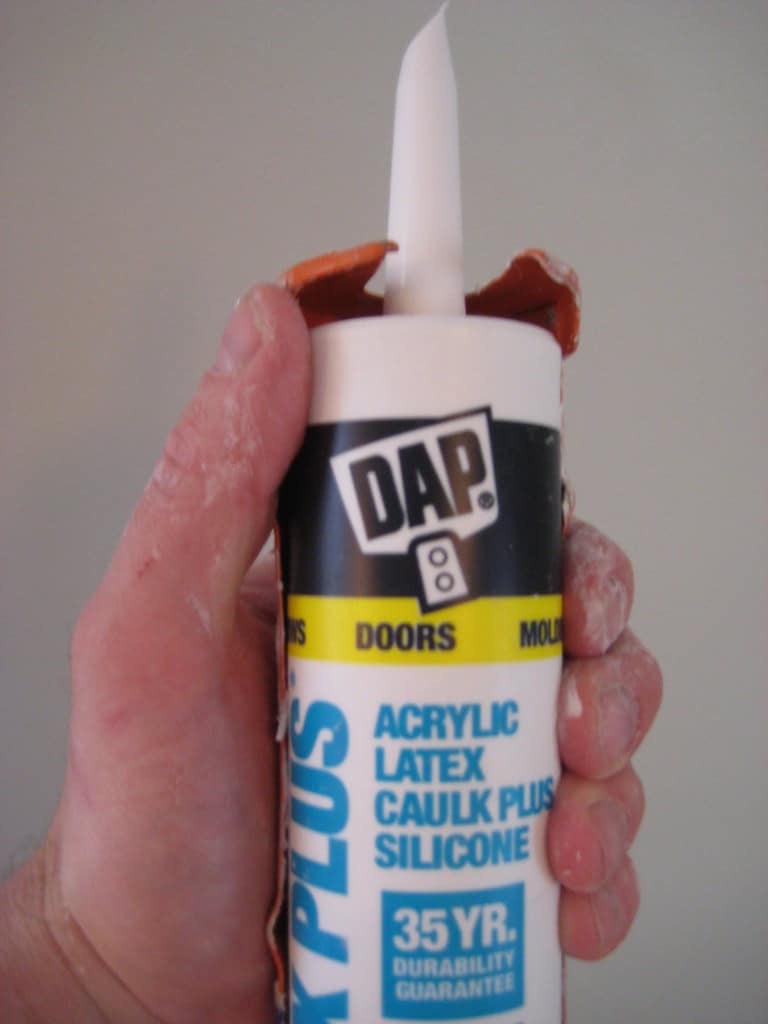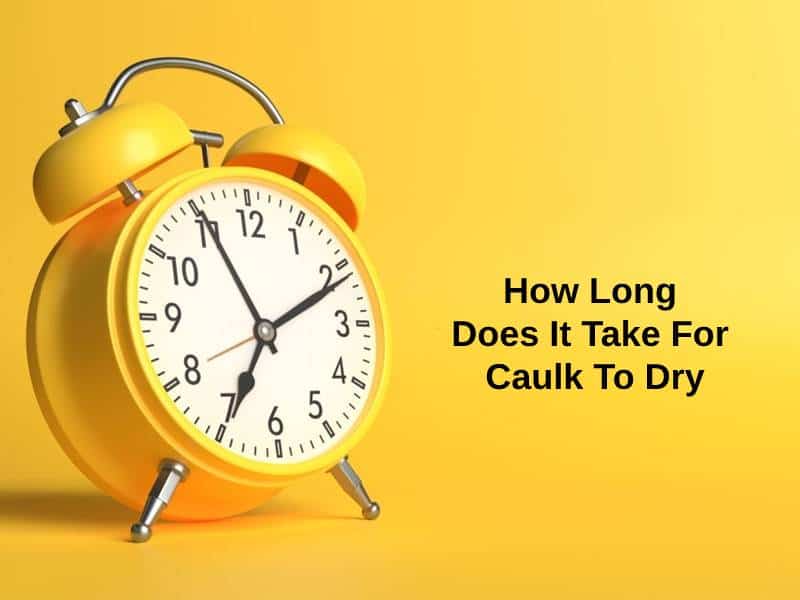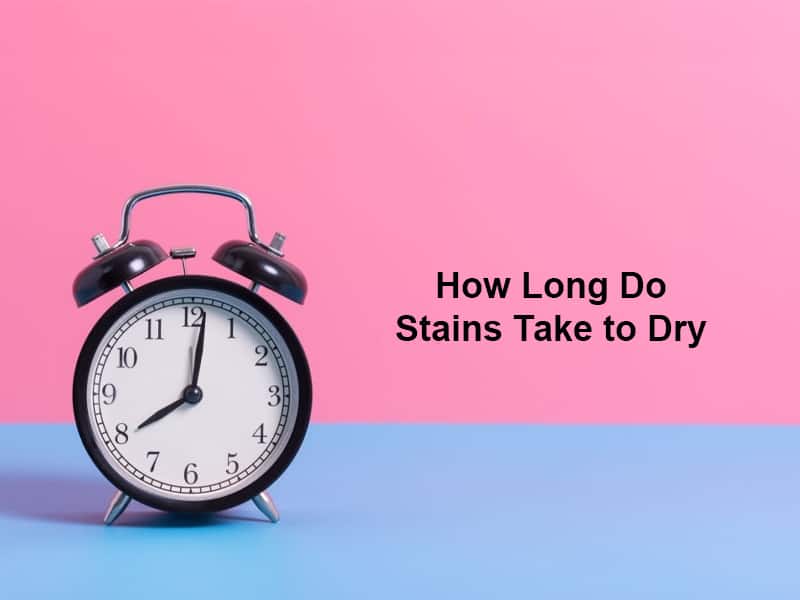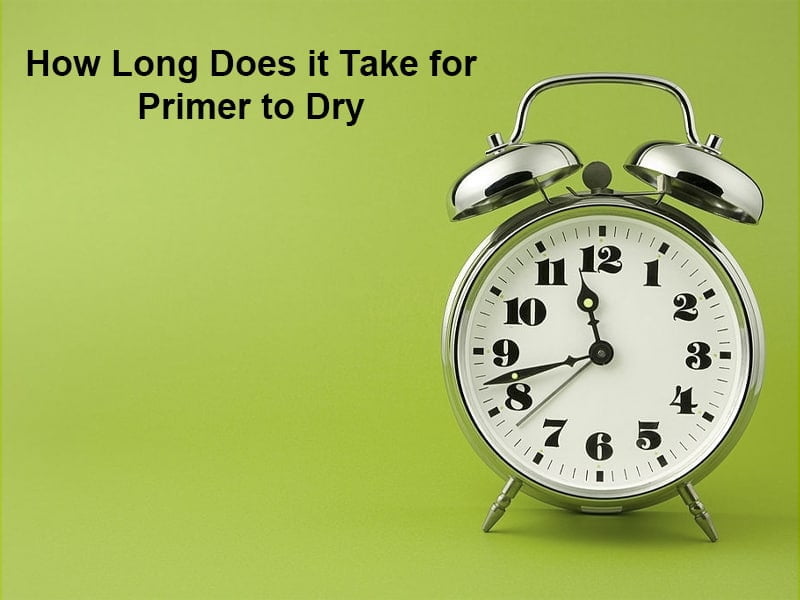Exact Answer: 24 hours
Understanding how caulk dries will help you purchase the right kind and correctly use it. There are three types of caulk available in the market; silicone, acrylic latex, and polyurethane.
Since they are all made from a different compound, the amount of time taken to dry each caulk differs. In this article, we are going to provide you with comprehensive information on how long does caulk takes to dry.

How long does it take caulk to dry?
| TYPE OF CAULK | TIME TAKEN TO DRY |
| Acrylic latex | 24 hours |
| Silicone caulk | 48 hours |
| Polyurethane caulk | 10 days |
As previously stated, the amount of time taken to dry caulk largely depends on the type of caulk you are using. We shall go through all the three types of caulk and the time they take to dry.
Acrylic latex
This caulk is perfect for filling small joints and gaps in woods, particularly on areas being painted and not exposed to water. Acrylic latex shrinks and cracks when exposed to water over a long time hence exposing the surface to water damage.
However, nowadays, acrylic latex is mixed with silicone to improve their durability, flexibility and water resistance. Mixing silicone and acrylic latex makes an excellent component for sink and tub usage.
Acrylic latex takes approximately 24 hours to dry; however, this depends highly on the temperature and amount of humidity.

Silicone caulk
This caulk is perfect for use with glass, ceramic and metal; this is because it sticks well to smooth and nonporous surfaces. Silicone caulk creates a flexible and long-lasting bond.
Nowadays, there are silicone caulks with antimicrobial additives which are great for preventing the growth of microbes in the kitchen and bathroom. Silicone caulk takes approximately 12 to 48 hours to dry depending highly on the temperature and humidity of an environment.
Polyurethane caulk
This caulk is becoming popular every single day, particularly in window seals and outdoor uses. Polyurethane caulk is paintable and is known for providing excellent elasticity, creating a watertight seal and repelling dirt.
However, polyurethane takes long to cure when compared to Acrylic latex caulk and silicone caulk. Usually, polyurethane caulk takes approximately three to ten days completely cure. Time taken to cure this caulk depends highly on temperature and humidity.
Understand how caulk reacts to moisture
Understanding how caulk reacts to humidity will help you choose the best one for your project. Usually, acrylic latex dries faster when water evaporates from the material used. Therefore, using a fan will help speed up the drying process. In contrast, silicone-based caulk requires moisture in order to cure and dry.
Using a humidifier in the room will help speed up the drying process of silicone caulk. When it comes to polyurethane caulk, exposure to direct water or additional moisture will reduce its drying process.
You should consider protecting it from moisture and water for a minimum of three days.

Conclusion
Apart from water, moisture or humidity, the temperature is another aspect you will need to consider when it comes to drying caulk. The recommended temperature for curing and applying caulk ranges from 40o F to 80o F.


























The application of caulk can be quite complex, and this article does a great job of simplifying the process and providing helpful tips.
Yes, it’s great to have all this information in one place. It makes it easier to make informed decisions about caulk selection.
Agreed, the article effectively breaks down the different types of caulk and their specific uses.
The information provided about the drying time of different caulk types is very useful. It will definitely help in choosing the right caulk for various projects.
Absolutely, knowing how different caulk types react to moisture and temperature is crucial for successful application.
The article provides a clear understanding of the drying times for different caulk types. It’s a valuable piece of information for DIY enthusiasts.
Definitely, this article delivers comprehensive insights into caulk drying and its associated factors.
Absolutely, knowing the specifics of caulk drying is essential for any home improvement projects.
The article is well-researched and covers all the necessary details about caulk drying. It’s a great resource for anyone working with caulk.
The details about the recommended temperature for curing and applying caulk are crucial. This article covers all the necessary aspects of caulk application.
I couldn’t agree more. This article provides a comprehensive understanding of caulk and its application.
Absolutely, the temperature considerations are often overlooked, but they play a significant role in caulk drying.
The article fails to address some important factors that can impact caulk drying time such as altitude and air pressure.
That’s a valid point. Considering environmental factors is essential for accurate estimations of drying time.
The section on how caulk reacts to moisture is particularly enlightening. I never knew the differences between caulk types in this regard.
I agree, it’s fascinating to learn about the impact of humidity and moisture on caulk drying.
This is a very comprehensive and informative article. It really helps in understanding the different types of caulk and how they dry.
I completely agree. The details provided are very helpful and clear.
The explanations about how different caulk types react to moisture and humidity are extremely helpful.
Absolutely, it’s great to have such detailed insights into caulk drying.
I agree, it’s crucial to understand these factors for successful caulk application.
The article could benefit from addressing some potential challenges or issues that may arise during the caulk drying process.
That’s a valid point. Including information on troubleshooting drying issues would enhance the article.